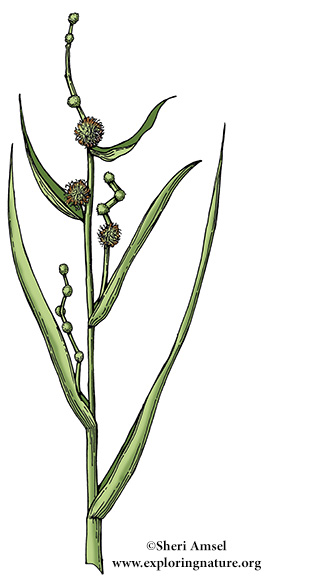


These tall plants are oftem mistaken for sedges because of their spiky flowers or grasses because of their tall grass-like leaves. They are wetland wildflowers with small bulbous flowers clasping the stem.
Flower Type: Flower too small to see individually and clustered into dense found heads that develop into burr-like fruits
Flower Color: Whitish-green
Leaf Arrangement: Alternate
Plant Type: Wildflower (Tall - 1-5 feet)
Leaf Type: Long, narrow, entire (smooth edged), stiff and 3-sided.
When you research information you must cite the reference. Citing for websites is different from citing from books, magazines and periodicals. The style of citing shown here is from the MLA Style Citations (Modern Language Association).
When citing a WEBSITE the general format is as follows.
Author Last Name, First Name(s). "Title: Subtitle of Part of Web Page, if appropriate." Title: Subtitle: Section of Page if appropriate. Sponsoring/Publishing Agency, If Given. Additional significant descriptive information. Date of Electronic Publication or other Date, such as Last Updated. Day Month Year of access < URL >.
Amsel, Sheri. "Bur Reed (Branching)" Exploring Nature Educational Resource ©2005-2024. December 14, 2024
< http://www.exploringnature.org/db/view/Bur-Reed-Branching >